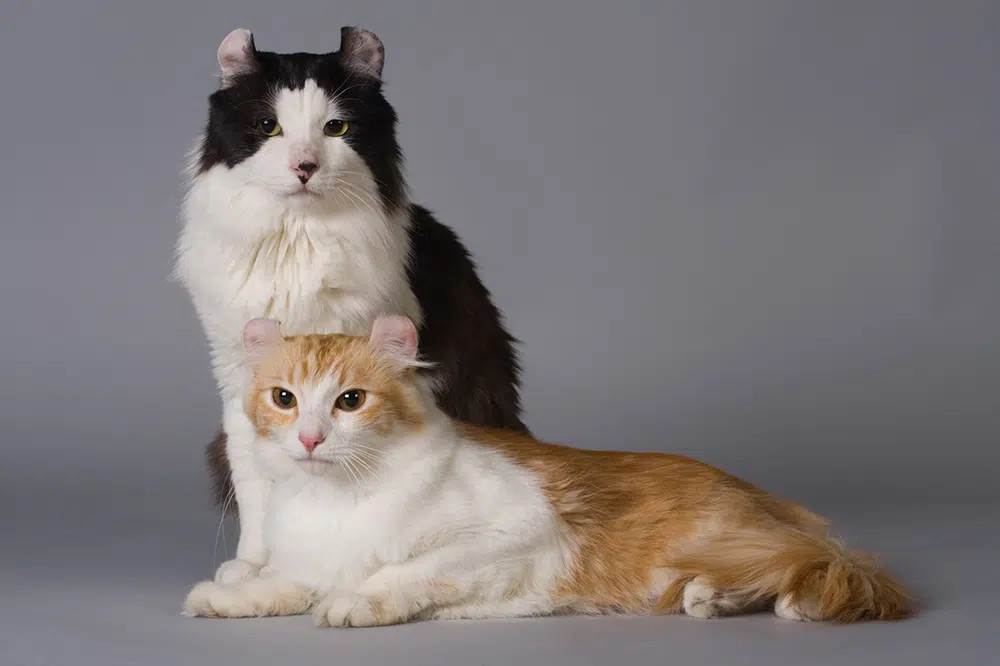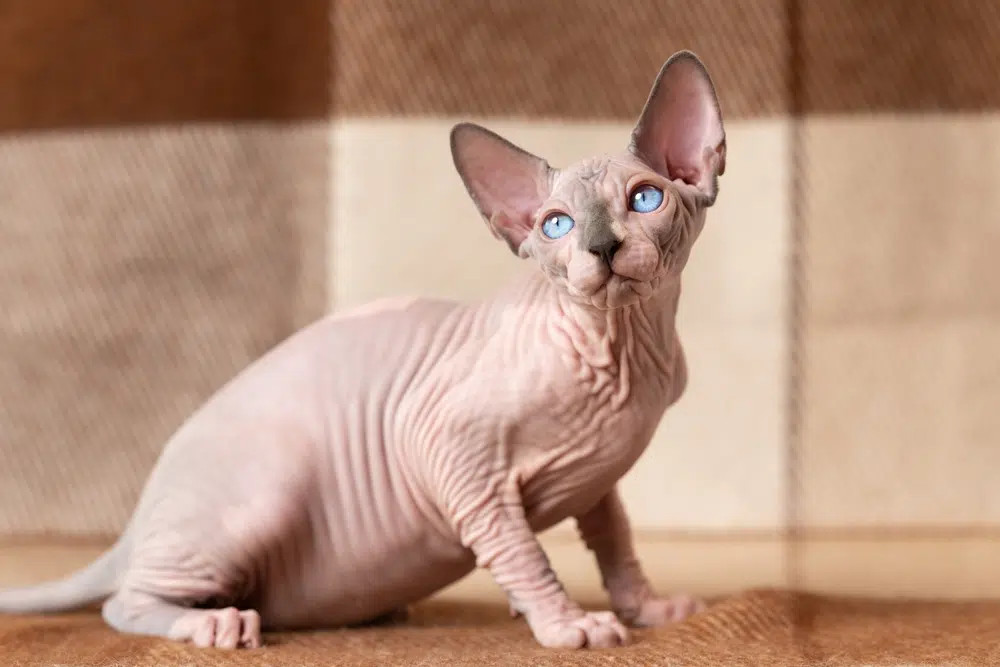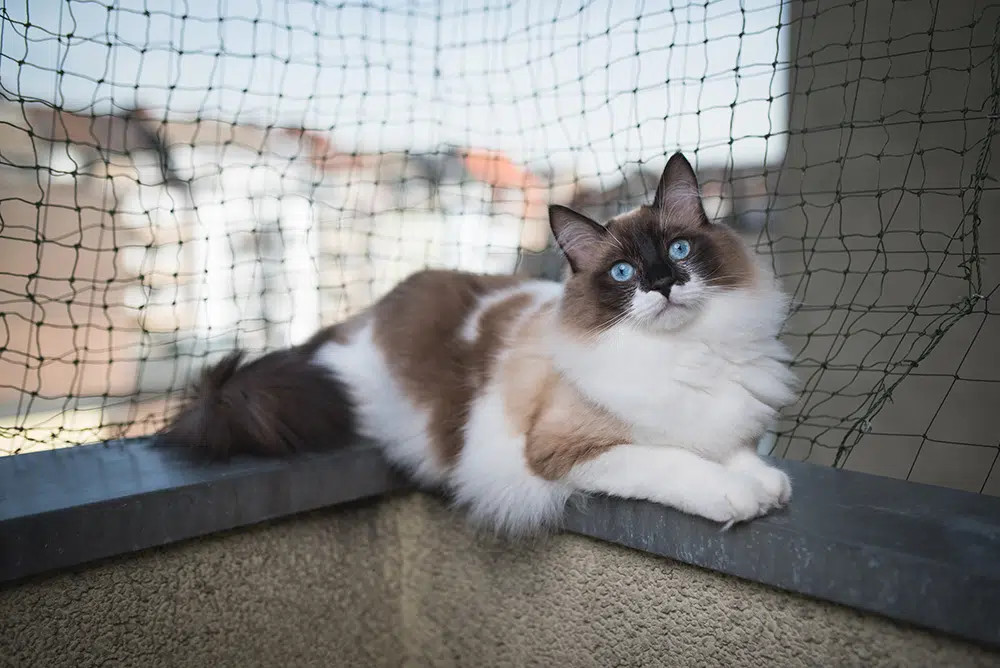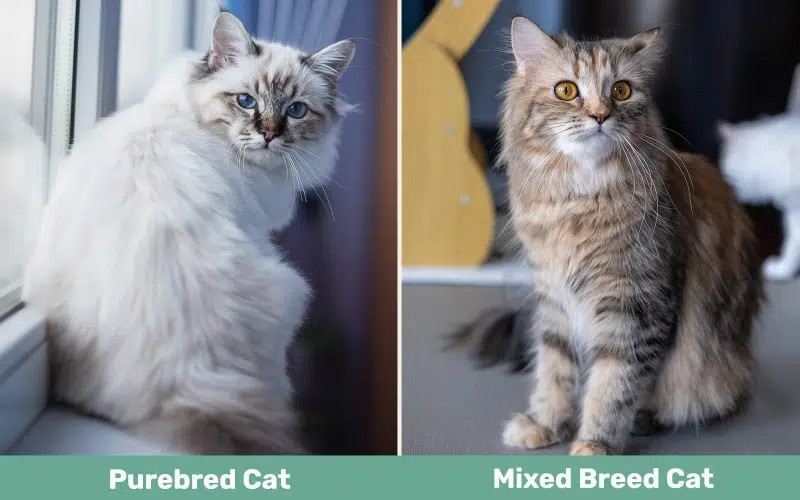Are you curious about your feline friend’s lineage? Determining your cat’s breed can be an exciting journey, but with so many breeds and mixed breeds, it can be tricky. At solcat.net, we offer a comprehensive guide to help you identify your cat’s breed using physical characteristics, behavior traits, and even genetic testing options. Let’s explore the world of cat breeds together to uncover the mystery behind your beloved companion. Unlock the secrets of your feline’s heritage and delve into the fascinating world of cat breeds, exploring mixed breed identification and cat DNA analysis.
1. Understanding Cat Breeds: Where Do I Start?
Identifying your cat’s breed can be an exciting journey. But first, it’s essential to understand the vast diversity within the feline world. So, where do you begin?
- Recognized Breeds: According to The International Cat Association, there are over 70 officially recognized cat breeds.
- Mixed Breeds: Most cats are not purebred and are a mix of two or more breeds. This can make identification challenging.
- Visual Identification: Start by observing your cat’s physical traits and behavioral quirks.
- Expert Resources: Websites like solcat.net offer detailed guides and information to assist you.
2. What Are the Key Physical Characteristics To Look For To Identify My Cat?
Physical characteristics can provide valuable clues about your cat’s breed. Here are the key features to examine:
2.1. Size and Weight
Size and weight are significant indicators. According to research, genetics play a significant role in determining a cat’s size and weight, making it a reliable factor in breed identification. What size is your cat?
- Large Cats: Weigh over 15 pounds. Breeds include Maine Coons, Norwegian Forest Cats, and Ragdolls.
- Medium-Sized Cats: Typically weigh between 9-12 pounds. Common breeds include Siamese, British Shorthairs, and American Shorthairs.
- Small/Dwarf Cats: Weigh less than 9 pounds. Examples include Munchkins and Singapura.
 Comparison of cat sizes
Comparison of cat sizes
2.2. Face Shape
Face shape can narrow down possibilities. What shape is your cat’s face?
- Round and Flat-Faced Cats: Also known as brachycephalic breeds. Examples include Persians and Exotic Shorthairs.
- Narrow-Faced Cats: Triangular faces are common in breeds like the Cornish Rex and Siamese.
2.3. Ears
Ears can have distinct characteristics. What do your cat’s ears look like?
- Curled Ears: Characterized by ears that curl backward, such as those of the American Curl.
- Folded Ears: Scottish Folds have folded ears due to a genetic mutation. Be aware that this mutation can cause health issues.
- Tufted Ears: Lynx tips are tufts of fur on the tips of the ears. Breeds include Maine Coons, Norwegian Forest Cats, and Siberians.
 two american curl cats in the studio
two american curl cats in the studio
2.4. Eyes
Eye color and characteristics vary among breeds. What color are your cat’s eyes?
- Common Colors: Amber, hazel, gold, green, and blue.
- Heterochromia: Different colored eyes, linked to the white dominant and white spotting genes, seen in breeds like Turkish Vans and Persians.
2.5. Coat
Coat type is a significant clue. What kind of coat does your cat have?
- Longhaired Cats: Fluffy coats that require regular grooming. Examples include Maine Coons, Persians, and Ragdolls.
- Shorthaired Cats: Short fur that lies close to the body. Common breeds include British Shorthairs, American Shorthairs, and Siamese.
- Curly-Haired Cats: Curly coats that can be long or short. Breeds include LaPerm and Cornish Rex.
- Hairless Cats: Lack a fur coat. The most well-known breed is the Sphynx.
 Sphynx cat sitting on a blanket and looking away
Sphynx cat sitting on a blanket and looking away
2.6. Colors, Patterns, and Markings
Coat color and patterns add another layer of identification. What patterns does your cat have?
- Solid Color: A single color coat, such as black, white, or brown.
- Bi-Color: Two colors, typically white with another color.
- Tortoiseshell: Patches of different colors, like orange and black, without white.
- Calico: Tri-colored coats with white, black, and orange. Almost always female.
- Points: Darker coloration on the face, feet, ears, and tail. Common in Siamese and Himalayan cats.
2.7. Tail
Tail length and shape can indicate breed. What does your cat’s tail look like?
- Long Tails: Most cats have standard, long tails.
- Short Tails: Uncommon, but distinctive. Breeds include the Manx and Japanese Bobtail.
 cat tail
cat tail
3. How Can Behavioral Traits Help Identify My Cat’s Breed?
Behavioral traits can offer additional insights into your cat’s breed, complementing physical characteristics. While each cat is an individual, certain breeds exhibit typical behaviors.
3.1. Smart Cat Breeds
Intelligent breeds are known for their ability to learn tricks and solve problems. Which breeds are considered smart?
- Abyssinian: Known for their curiosity and intelligence.
- Siamese: Highly intelligent and trainable.
- Bengal: Active and smart, requiring plenty of mental stimulation.
3.2. Noisy Cat Breeds
Vocal cats love to communicate with their owners through meows, purrs, and other sounds. Does your cat like to talk a lot?
- Siamese: Very vocal and communicative.
- Oriental: Known for their chatty nature.
- Burmese: Affectionate and vocal, often following their owners around.
3.3. Calm and Docile Cat Breeds
Docile breeds are quiet, gentle, and enjoy relaxing with their owners. Is your cat calm and laid-back?
- Persian: Known for their calm and gentle nature.
- Ragdoll: Docile and relaxed, often going limp when held.
- British Shorthair: Affectionate but not overly demanding, with a calm demeanor.
 ragdoll cat lying in the edge of the balcony corner
ragdoll cat lying in the edge of the balcony corner
3.4. Friendly Cat Breeds
Friendly breeds are sociable and enjoy interacting with people and other animals. Is your cat friendly to everyone?
- Ragdoll: Known for their friendly and affectionate nature.
- Maine Coon: Gentle giants who are friendly and good with children and other pets.
- Burmese: Affectionate and people-oriented, enjoying close contact with their owners.
3.5. Independent Cat Breeds
Independent breeds are self-sufficient and don’t require constant attention. Can your cat entertain itself for long periods?
- Persian: While affectionate, they are also independent and enjoy their own space.
- British Shorthair: Adaptable and independent, happy to spend time alone.
- Singapura: Curious and active but also comfortable with their own company.
3.6. Cat Breeds That Like Water
Most cats avoid water, but some breeds are surprisingly drawn to it. Does your cat enjoy playing with water?
- Turkish Van: Known for their love of swimming.
- Maine Coon: Often fascinated by water and may play in it.
- Bengal: Enjoys playing with water and can be found splashing around.
4. What If My Cat Is A Mixed Breed?
Mixed-breed cats can be more challenging to identify due to their diverse genetic makeup. How can you approach identification?
- Combine Traits: List all the physical and behavioral traits your cat exhibits.
- Search Online: Use search engines like Google with specific traits. For example, “calm large short fur tan colored points.”
- Cross-Reference: Compare your cat’s traits with breed lists to find commonalities.
- Consider Ancestry: If your cat displays traits from multiple breeds, it may have ancestry from all those breeds.
5. Can Genetic Testing Accurately Identify My Cat’s Breed?
Genetic testing offers a scientific approach to identifying your cat’s breed and can be particularly useful for mixed-breed cats. How accurate is it?
- DNA Analysis: Genetic tests analyze your cat’s DNA to determine their genetic makeup.
- Breed Identification: Provides an accurate answer about the breed or breeds that make up your cat.
- Health Information: Genetic testing can also reveal potential health concerns and predispositions.
- Veterinarian Advice: Consult your veterinarian for recommendations on genetic testing options.
- Reliable Options: Basepaws offers a cat DNA test that can help identify your cat’s breed and potential health risks.
 Purebred vs Mixed Breed Cat side by side
Purebred vs Mixed Breed Cat side by side
6. How Do I Conduct My Own Cat Breed Investigation?
Conducting your own investigation involves a systematic approach to gathering and analyzing information about your cat. How can you get started?
6.1. Gather Information
- Physical Traits: Document your cat’s size, face shape, ear type, eye color, coat type, patterns, and tail.
- Behavioral Traits: Note your cat’s intelligence, vocalness, temperament, friendliness, independence, and affinity for water.
- Photographs: Take clear photos of your cat from different angles to aid in visual comparison.
6.2. Research
- Online Resources: Use websites like solcat.net, which provides detailed information and guides on cat breeds.
- Breed Databases: Explore breed databases from organizations like The International Cat Association (TICA) and the Cat Fanciers’ Association (CFA).
- Veterinary Experts: Consult with your veterinarian for their insights and recommendations.
6.3. Analysis
- Compare Traits: Match your cat’s traits with those of known breeds in your research.
- Create a List: Compile a list of potential breeds based on the matching traits.
- Refine Your Search: Use more specific search terms online, such as “large cat with tufted ears and friendly behavior.”
6.4. Tools and Resources
- Breed Identification Charts: Use charts that compare physical and behavioral traits across different breeds.
- Online Forums: Join cat lover forums and communities to share information and get feedback.
- Books and Guides: Consult books and guides on cat breeds for detailed descriptions and images.
6.5. Examples
- Scenario 1: You have a large cat with long hair, tufted ears, and a friendly personality. Potential breeds include Maine Coon and Norwegian Forest Cat.
- Scenario 2: Your cat is small with short hair, a narrow face, and is very vocal. Potential breeds include Siamese and Oriental.
7. Understanding Breed-Specific Health Issues
Certain cat breeds are predisposed to specific health issues, which can influence your cat’s care and well-being. What should you know?
- Genetic Predispositions: Purebred cats are more likely to inherit genetic health issues.
- Common Issues: Examples include hypertrophic cardiomyopathy (HCM) in Maine Coons and polycystic kidney disease (PKD) in Persians.
- Preventive Care: Regular veterinary check-ups and screenings can help detect and manage these issues early.
- Informed Decisions: Knowing your cat’s breed can help you anticipate potential health problems and provide appropriate care.
8. How to Use Solcat.Net To Help Identify My Cat?
Solcat.net is your ultimate resource for all things feline. How can it assist you in identifying your cat’s breed?
- Comprehensive Guides: Access detailed guides on various cat breeds, including physical and behavioral traits.
- Image Galleries: Browse extensive image galleries to compare your cat with different breeds.
- Expert Articles: Read articles written by veterinarians and cat experts on breed identification.
- Community Forum: Connect with other cat lovers to share information and get advice.
- Up-to-Date Information: Stay informed with the latest research and developments in feline health and breed identification.
Address: 950 Alaskan Way, Seattle, WA 98104, United States. Phone: +1 (206) 386-4000. Website: solcat.net.
9. Why Is It Important To Know My Cat’s Breed?
Knowing your cat’s breed can enhance your relationship and improve their care. What are the benefits?
- Predicting Behavior: Understanding breed-specific behaviors can help you anticipate your cat’s needs and provide appropriate enrichment.
- Tailoring Care: Knowing potential health issues can help you provide proactive veterinary care.
- Better Understanding: Learning about your cat’s heritage can deepen your appreciation for their unique qualities.
- Informed Decisions: It helps you make informed decisions about diet, exercise, and lifestyle.
10. Frequently Asked Questions (FAQs) About Cat Breed Identification
10.1. How Accurate Is Visual Breed Identification?
Visual identification can be a good starting point but is not always accurate, especially for mixed-breed cats. Genetic testing provides a more definitive answer.
10.2. Can A Veterinarian Help Identify My Cat’s Breed?
Yes, a veterinarian can provide insights based on their expertise and may recommend genetic testing.
10.3. What Are The Most Common Mixed-Breed Cats?
Domestic Shorthair and Domestic Longhair are common mixed breeds, often displaying a variety of traits.
10.4. How Do I Find A Reputable Cat Breeder?
Look for breeders who prioritize the health and well-being of their cats, conduct genetic testing, and provide a clean and stimulating environment.
10.5. Are Certain Breeds More Prone To Specific Behaviors?
Yes, certain breeds are known for specific behaviors. For example, Siamese cats are often vocal, while Persians are typically calm.
10.6. Can Cat Breed Influence Their Lifespan?
Yes, some breeds have longer lifespans than others. For example, Siamese and Burmese cats tend to live longer than other breeds.
10.7. How Can I Tell If My Cat Has A Health Issue Related To Their Breed?
Monitor your cat for symptoms associated with common breed-specific health issues and consult your veterinarian for regular check-ups.
10.8. What Is The Difference Between A Tortoiseshell And Calico Cat?
Tortoiseshell cats have patches of different colors without white, while calico cats have white with patches of other colors.
10.9. Is It Possible To Determine A Cat’s Breed Through DNA Testing Alone?
Yes, DNA testing can provide a detailed breakdown of a cat’s breed composition and genetic markers.
10.10. What Resources Are Available At Solcat.Net For Cat Owners?
Solcat.net offers comprehensive guides, image galleries, expert articles, and a community forum for cat owners.
Conclusion: Unveiling Your Cat’s Identity
Determining your cat’s breed can be an enjoyable and educational experience. By carefully observing physical characteristics, behavioral traits, and utilizing resources like solcat.net, you can uncover the mystery behind your feline friend’s lineage. For a definitive answer, consider genetic testing to reveal your cat’s true identity and gain valuable insights into their health and well-being.
Ready to dive deeper into the world of cats? Visit solcat.net today to explore our extensive collection of articles, guides, and resources. Join our community of cat lovers and discover everything you need to know about your feline companion. Whether you’re curious about breed-specific behaviors, health issues, or simply want to connect with other cat enthusiasts, solcat.net is your go-to destination.
